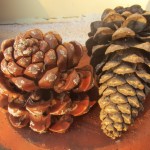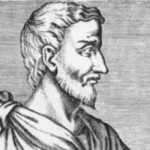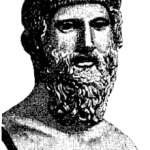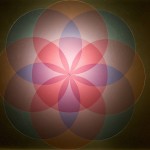Numbers, Sacred Geometry and Musical Frequencies? Are they related?
 Because people know that I’m delving into the wonderful world of frequencies, I get sent a lot of stuff that might be related. Facebook is inundated with memes, videos, and stories of the beauty of how numbers are important in nearly… well, everything.
Because people know that I’m delving into the wonderful world of frequencies, I get sent a lot of stuff that might be related. Facebook is inundated with memes, videos, and stories of the beauty of how numbers are important in nearly… well, everything.
This video, titled “Sonic Geometry: The Language of Frequency and Form” was one of those that showed up in my Facebook feed one day. It’s published by the user “Alanna Luna” for your reference in case the link is ever broken. This video presents some good food for thought in how we look at numbers in general. In addition, certain numbers seem to recur in math, in the galaxy, in music, in our daily lives, etc… Coincidence or planned? You be the judge…
The video starts out about discussing “base 60” and how we use that in measuring minutes, miles, or geometrical degrees. We encounter a lot of 12’s and 60’s. Our “12/60” based math comes from early Mesopotamia (nearly 5,000 years ago). How these cosmic decisions were made, no one knows.
Some pivotal moments in history to see what other numbers, patterns, and synchronicities appear…
- Pythagoras led a school of thought that married mathematics, music, and geometry. He applied geometry in new ways, especially to music. According to Pythagoras, all musical note values are based on mathematics.
- Pythagoras is the first to have identified numerical values for octaves and how divisions of strings (by ratios) made musical pitches. Each was assigned a number according to the placement in a kind of master grid. By using 5th’s beginning from note #1, he kept going until he reached note #27.
- The note 27 seemed to be an important note. He kept doubling it to get the octaves: 54, 108, 216, 432, etc.
WHAT ABOUT THESE NUMBERS?
- Taking the number 432 from Pythagoras’ system, we find that many Tibetan bowls and ancient flute-like instruments tend to be based on a tuning system that fits within the above Pythagorean numbers. Basically, many of these instruments were tuned within the A=432 Hertz tuning system. Coincidence?
- Pythagoras didn’t calculate these numbers based on vibrations per second so it’s interesting that they do fit within that system.
- In early classical music, instruments tended to be made using numbers that were very close to Pythagoras’ numerical system. How is this even possible without the measuring devices that we have today?
- Who chose this note (432) in particular for tuning and why?
TWO DIMENSIONAL GEOMETRY:
- Pythagoras said that geometry and math held a key to all life everywhere. Was he right?
- The circle, triangle, square, and pentagon always add up to the same numbers when adding those numbers from the angles of degrees for a particular shape. For example, the sum total of all three interior angles of a triangle is always 180. For both the square and circle, it’s 360. For the pentagon, it’s 540. The hexagon is 720. A seven-sided heptagon is 900. An octagon is 1080.
- Look at these numbers in a different way. They happen to be in the same numerical group as 432. And, when added together, they all add up to nine, just like 432.
- Add these numbers as vibration cycles (Hertz): 180 = F#, 360 = F# an octave higher, 540 = C# a fifth higher, 720 = F# at the next octave, 900 = A# to complete a major triad and finally, 1080 = C#. All of these numbers add up to an F-sharp Major chord. Coincidence?
- Plato came up with what we now call the “platonic solids.” He advanced the study of two-dimensional geometry to three-dimensional.
- Looking at the angles found in these shapes, then, adding them up and comparing those numbers with musical tones, we get: Tetrahedron = 720 (F#), cube = 2160 (C#), Octahedron = 1440 (F#), and Icosahedron = 3600 (A#). Again, another F-sharp Major chord. Coincidence?
SACRED GEOMETRY:
- The “germ of life” when repeated, goes onto reveal the “seed of life,” then the “flower of life” pattern found at many sites around the world.
- When taking the numbers from these circles and adding them together, you get these numbers: one circle = 360 degrees (F#), two circles = 720 (F#), three circles = 1080 (C#), four circles = 1440 (F#), five circles = 1800 (F#) and sixth circle = 2160 (C#). Coincidence?
DO WE SEE THESE NUMBERS ANYWHERE ELSE?
- The number 2160 (expressed by both the cube and germ of life pattern): Without the “0,” it’s half of the number 432.
- The number 2160 begins to show up in other places. The narrator in the video continues to discuss the year, the months, etc. taking 2160 earth years to complete according to the Mayan calendar (procession of the equinox). Without giving a lot more away, be sure to start at about 13:37 in the video. Again, coincidence?
- In a nutshell, the number 2160 seems to show up in a lot of places.
- Its this a cosmic riddle? Earth cycles, time, geometry, space, and sonic frequency seem to be based on the same numbers over and over again. Coincidence?
- These numbers continue to be important to various organizations and religious groups as they have for thousands of years.
NOTE: From about 17 minutes in the video to the end, there’s a lot of speculation but the information is still interesting. The important point the author makes is that there appears to be a language that we might not yet understand that’s based on numbers. He states that whole Pythagorean numbers appear to be the building blocks for something. But, what is that something? I’d like to hear your thoughts in the comment section below after you’ve watched the video.
It appears as though numbers are very important. Math has never been my favorite subject (confession time!) so I’ve not really delved into this wonderful world. However, I do know this much… math seems to be a very integral part of everything we do. The number 432? There are just too many coincidences for this not to mean something musically, especially since all the numbers presented above just happen to make a major chord in my favorite scale of F-sharp major. So, if you’re one of my students reading this, go practice your F-sharp scale!
Back to the number 432… I believe this is one more case for the tuning of a concert pitch at A=432.
[mailerlite_form form_id=2]





[…] shapes represent an F# Major triad. What are the odds of DNA connecting with geometrical shapes? CLICK HERE to read my article on sacred geometry. Jone’s article references several studies in addition […]
[…] to musical frequencies, those frequencies create an F# Major triad. If you want more information, CLICK HERE to read that article. This told me there are numerical connections in other places. Does one of […]
[…] A=432 concert pitch, I found that math and music are related in strange ways. In my blog post about numbers and sacred geometry, I show how the F-sharp major chord is found in geometry. You’ll have to read the post for […]